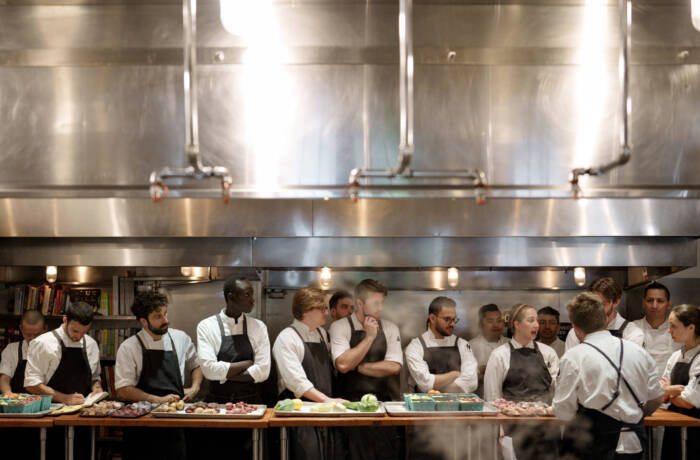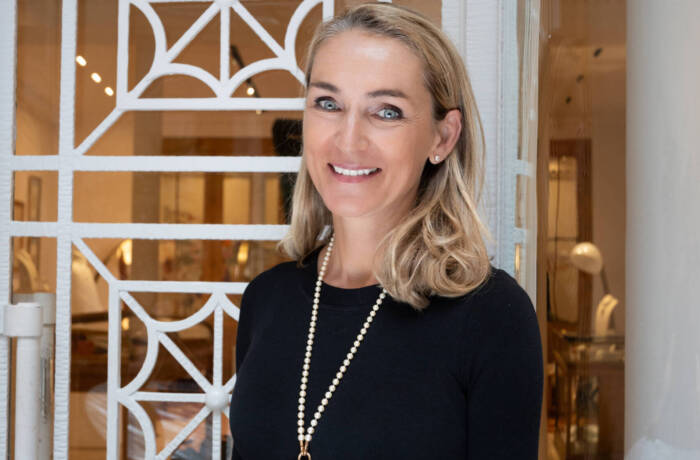
Cooper Lake, Alaska. The creek draining the lake is coloured red by tannins from the surrounding vegetation. The 30 x 30 initiative to protect such sites is supported by The Nature Conservancy via the US government’s America the Beautiful initiative © Stuart Chape/TNC Photo Contest 2021
The oceans have an increasing potential to provide food for a global population. The challenge is how to do so without harming the planet or its people. Chris Stokel-Walker discovers ideas, organisations and investors helping aquaculture towards a sustainable future
The ocean is an essential pillar of planetary life, sustaining and feeding billions worldwide. Quite aside from its ability to capture and sequester harmful emissions, our planet’s waters are a major driver of keeping us alive – for drink and for food. Three billion of us depend on wild-caught and farmed seafood as a primary source of protein – which makes it vital that the ocean is kept as a bountiful natural resource.
Follow LUX on Instagram: luxthemagazine
Aquaculture is the breeding and harvesting in water of fish, shellfish and other marine life. It is underwater farming, in short, and it is crucial to humankind. “Aquaculture is an essential food source, especially in our changing climate,” says Danielle Blacklock, Director of the Office of Aquaculture at the United States’s National Oceanic and Atmospheric Administration (NOAA). “Globally, aquaculture supplies more than 50 per cent of all seafood produced for people to eat – a percentage that will keep rising. And expanding domestic aquaculture presents important opportunities to bolster climate– smart and resilient food systems.”
Making sure those food systems are resilient and impervious to climate issues is important – because the population keeps growing. “We must come together and problem- solve how to feed people within the sustainable limitations of our planet,” continues Blacklock. “Within that frame, aquaculture becomes a leading method for ensuring nutritious protein is available for families today and in the future.”
Seafood is incredibly nutritious. It is full of vitamins and minerals that can help promote healthy growth, with large volumes of protein, vitamins D and B12, and omega-3 fatty acids. Promoting the cultivation of seafood is certainly vital, but that cultivation needs to be done in the right way. Globally, humans’ appetite for seafood and fish has had negative impacts on the marine environment. So aquaculture needs to be practised sustainably from top to bottom. This includes looking at the types of feed used, tackling waste and making production methods more sustainable.

Karen Sack
This is a particularly urgent challenge when you consider that aquaculture is as big as the global beef industry. “We’ve been fishing out our oceans on an industrial scale since the end of the Second World War,” says Karen Sack, Executive Director of the Ocean Risk and Resilience Action Alliance (ORRAA), which brings together different stakeholders worldwide to promote a sustainable and equitable blue economy. In the course of the past decade or so, says Sack, the proportion of our seafood farmed from aquaculture has outstripped that of wild-caught fish. “Part of that is because of industrial overfishing, which includes the wasteful and damaging discards that result from this,” she explains. “Part of it is because of the development and operation of agricultural techniques that have been pushed into the ocean and coastal space.”

Robert Jones
The latter can be a good thing – if done well. In terms of emissions and water use, the resource intensity of farming the oceans is more efficient than producing animal protein on land for human consumption. “When we look at the global challenge to 2050, we need to produce more food with fewer resources, and aquaculture offers that opportunity,” says Robert Jones, Global Lead for The Nature Conservancy’s Aquaculture Program. The problem is that, historically, the demand for more food more quickly has meant that industry has built many aquaculture projects to produce as much seafood as possible in as small a space and quick a time as possible – and damn the consequences. It’s a problem that’s out of sight, out of mind for many: 90 per cent of aquaculture farming occurs within Asia, meaning that many consumers do not see the harmful impact that intensive, industrial farming has on the environment.
Take, for instance, the early development in the 1950s and beyond of what the industry calls “carnivorous fin fish” – or what most of us would call salmon, tuna and other big fish that feed on other fish. That and shrimp farming was industrialised at scale, without considering the impact on broader marine life. Shrimp farming can be hugely destructive to coastal ecosystems, while any farmed-fish development can result in pollution and the overuse of antibiotics to try to prevent disease within stocks, causing wider harm.

Wetlands at Valles Caldera National Preserve. New Mexico’s Rio Grande and its tributaries supply water to more than half of New Mexico’s population. To maintain the clean water supply, The Nature Conservancy’s Rio Grande Water Fund is restoring forests upstream that have been lost to fires © Alan W Eckert/TNC
It doesn’t need to be that way. Aquaculture is necessary not only because it can be a sustainable food source, but because it can help prevent wild fishing from negatively affecting sea populations. “We need to protect those marine resources and ensure sustainability going forward,” says Jones. “There is a maximum amount that our oceans can provide, in spite of being so vast, covering 70 per cent of our planet and providing food for billions of people.”
While doing things right isn’t always easy, it is certainly possible. “We have seen an amazing growth in potentially sustainable aquaculture,” says Sack. “If we’re looking at mitigating risks, the key is the type of farming undertaken and where it’s undertaken. We need to ensure aquaculture isn’t at an industrial scale that requires antibiotics or nutrients that could harm both the species and the ecosystems where the farms are situated.”
Current developments in sustainable aquaculture include looking at healthy seaweeds and bivalves, such as nutrient-dense oysters and mussels. These can feed people and clean ocean waters without requiring any animal feed or antibiotics. It is also important to engage with the local community around which those more intensive farming activities are based, and make sure that any benefits brought about from sustainable alternatives are ploughed back into the area, protecting mangroves and stone buffers and seagrasses that make our oceans what they are.
Coastal and marine flora aren’t only important for maintaining marine biodiversity. They are also a food source in themselves. Seaweed production more than tripled between 2000 and 2018, with more than 35 million tonnes now being produced annually worldwide. According to the World Health Organisation and the Food and Agriculture Organisation of the United States, “increased cultivation and utilisation of seaweed are expected to be important pillars of sustainable food security and a robust aquatic economy in the coming years.”
Read more: Richard Spinrad on moving towards a blue planet
But making it a sustainable pillar of the blue economy is a challenge. Almost all seaweed production – which accounts for half of marine aquaculture production worldwide – occurs in just nine countries in Asia, where expertise to prevent disease among the crop is not always advanced. Making sure that seaweed farming takes place sustainably, harnessing the potential to diversify the submarine environment rather than bringing disease and industrial production to the seas, is critical.
The responsibility for ensuring that global aquaculture is viable lies not just with the companies doing the farming, but with those bankrolling them. Sack believes the opportunity for investing in sustainable aquaculture is just starting. “There are opportunities to make some money and do good, but you need to exercise some caution, do due diligence and look for impact funds with a firm track record, so that you don’t perpetuate a status quo that isn’t sustainable,” she says. We only have one planet, after all. And we need to make sure it stays around for all life to live on.
Find out more:
noaa.gov
oceanriskalliance.org
nature.org
This article first appeared in the Deutsche Bank Supplement of the Autumn/Winter 2023/2024 issue of LUX magazine








